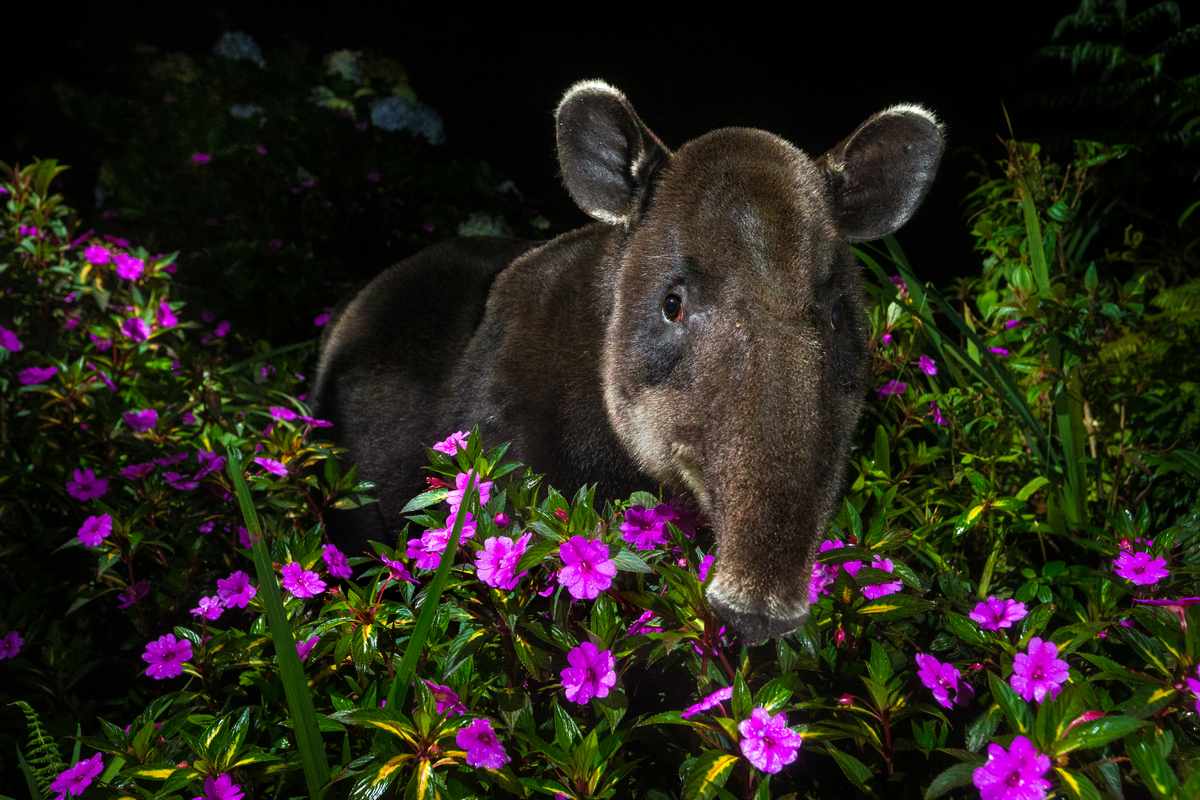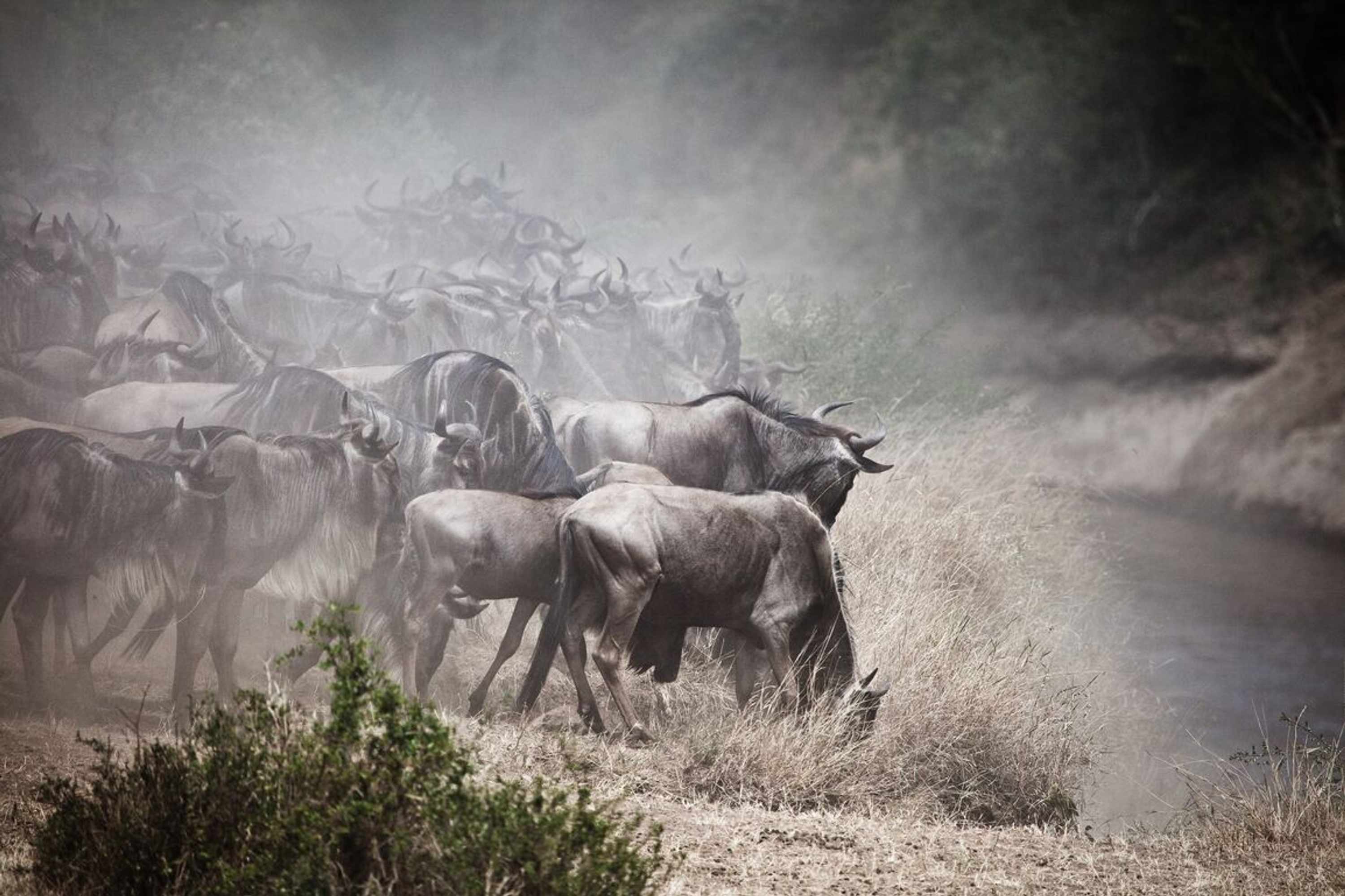Nature
Want to stop climate change? New report outlines a powerful solution: wildlife
- 7 min read
Rewilding even a small set of species now can help keep the global rising temperature below the dangerous 1.5-degrees Celsius threshold
Rewilding even a small set of species now can help keep the global rising temperature below the dangerous 1.5-degrees Celsius threshold

A Baird's Tapir (Danta) walking at night through her natural habitat, deep in the pristine cloud forest of Braulio Carrillo National Park in Costa Rica. (Photo: © Michiel van Noppen)
As world governments determine how best to address the climate crisis and the chaos that it causes, a new paper published today, March 27, reveals an often overlooked but critical natural solution: the conservation and restoration of wildlife, in abundance.
According to the report published in the scientific journal Nature Climate Change and led by Yale School of the Environment, the protection and rewilding of even a small targeted group of wildlife species would help facilitate the capture and storage of enough carbon to keep the global rising temperature below the 1.5-degree Celsius tipping point--the internationally agreed-upon threshold for preserving a livable planet--by the end of the century. The publication was supported by the Global Rewilding Alliance, the Wild Foundation, One Earth, Rewilding Europe and Re:wild.

Baird's Tapir (Photos courtesy of Esteban Brenes-Mora/Re:wild)
“Climate change is usually only seen as one of a number of threats to wildlife species,” said Andrew Tilker, Re:wild species conservation coordinator and co-author of the paper. “What we have found, however, is that the conservation of wildlife--allowing species to play their functional roles in ecosystems--offers untapped potential as a solution to climate change. A genuine and urgent investment in species rewilding, combined with efforts to halt deforestation and rewild those degraded wildlands in addition to transitioning to renewable energy, is enough to stave off the worsening effects of climate change.”
Wildlife are pivotal in enabling ecosystems--from oceans to deserts, forests to prairie--to capture and store carbon. Some animals disperse the seeds of trees and other plants that expertly sequester carbon. Some animals trample understory vegetation, giving carbon-storing trees the room they need to grow. Others prey on the animals that, left unchecked, would tear down carbon-storing trees and plants. Others still ensure that soil and water are rich with nutrients that store carbon.
Frans Schepers, managing director of Rewilding Europe and paper co-author “Taking advantage of this vast potential will require a change in mindset within science and policy. There is urgency because we are losing populations of many animal species at the very time that we are discovering the degree to which their role in ecosystems can enable carbon capture and storage. As has been demonstrated in Europe and North America, many of these species will come back if we only allow them.”
Wildlife species are so good at facilitating carbon capture that, according to the paper, the protection and restoration of even just nine wildlife species (or groups of species), with a focus on long-lived species--marine fish, whales, sharks, gray wolf, wildebeest, sea otter, musk ox, African forest elephant and American bison--could together help facilitate the capture of 6.41 gigatons of carbon dioxide annually. Collectively this would be more than 95% of the amount needed every year to meet the global target of removing 500 gigatons of carbon from the atmosphere by 2100, which would keep global warming below the 1.5-degree Celsius threshold.

Wildebeest at sunset in the Maasai Mara. The recovery of Wildebeest numbers has helped turn the Serengeti ecosystem from a carbon source into a carbon sink (Photo by Robin Moore/Re:wild)
Here are some examples of how wildlife facilitates absorption of carbon:
- When wildebeest in the Serengeti were at a historical low in the early 20th century as the result of disease, the grass that they would usually graze on built up as fuel, resulting in more frequent and intense wildfires that released carbon into the atmosphere. Since the wildebeest population has been restored through conservation efforts, the Serengeti has once again become a carbon sponge, taking in 4.4 million more tons of carbon annually than when wildebeest were at their lowest abundance.
- By consuming sea urchins and other invertebrates that eat kelp, sea otters play a key role in maintaining and restoring coastal kelp forests that lock up carbon in the ocean. When sea otter populations decline, these carbon-storing ecosystems begin to fail and can even collapse. Protecting and restoring sea otters could facilitate the storage of 5.2 million tons of carbon annually.
- Not only do forest elephants in the Congo Basin eat and poop out the seeds of trees that are especially efficient at storing carbon, but they promote seed germination in their feces. They also trample understory vegetation to ensure room for these larger trees to grow. Restoring elephants to their historical levels within national parks and protected areas in the region could lead to an additional annual storage of 13 million tons of carbon.
“Wildlife, throughout their interaction with the environment, are the missing link between biodiversity and climate,” said Oswald Schmitz, professor at the Yale School of the Environment and lead author of the report. “Rewilding is the best nature-based climate solution available to humankind. Working with nature is the only ‘geoengineering’ option to solve the climate emergency.”
Yet it has been harder and harder for wildlife to play these roles as their populations continue to decline as the result of a variety of human-caused threats, including animal agriculture, extractive industries, infrastructure development and poaching.
Of the 150,300 species that have been assessed by the IUCN Red List of Threatened Species, for example, nearly 30 percent are threatened with extinction, many of which are declining in population. Lions, for instance, have disappeared from 84 percent of their historic range, declining from a population of about 40,000 just two decades ago to fewer than 23,000 wild lions today. Lions are listed as vulnerable on the IUCN Red List of Threatened Species. Similarly, blue whale populations have declined by nearly 99%, from 350,000 individuals before the onset of commercial whaling to between 5,000 and 10,000 individuals today.

Wildebeest migration in the Maasai Mara. The recovery of Wildebeest numbers has helped turn the Serengeti ecosystem from a carbon source into a carbon sink (Photo by Robin Moore/Re:wild)
To effectively address climate change, species must be restored to whatever abundance is necessary for them to meaningfully play their traditional, ecological role in the ecosystem, according to the report. Restoration and protection can include stopping the threats to the species, translocations or relocations to safer habitat, conservation breeding programs that reintroduce individual animals to the wild, or a combination of methods.
In addition to making the planet more resilient to climate change, these efforts have the added benefits of stemming biodiversity loss and bolstering ecosystems that provide people with clean air, clean water, livelihoods, and homes that help preserve human cultures. They can also help countries simultaneously meet their climate goals, Convention on Biological Diversity goals, and their UN Sustainable Development Goals. On the flip side, losing these species could result in their ecosystems becoming carbon sources, instead of storing carbon.
“This paper analyzes the power of rewilding only a handful of species,” said Wes Sechrest, Re:wild chief scientist and CEO. “We could accomplish significantly more for the planet if we invested in biodiversity at a much greater scale, which is a goal that we share at Re:wild with our local partners around the world. We do not need far-fetched technology and we do not need to reinvent the planet. We just need to rewild it.”
Fifteen scientists from eight countries contributed to the report. The paper’s authors are: Oswald J. Schmitz, Yale University; Magnus Sylven, Wild Foundation; Trisha B. Atwood, Utah State University; Elisabeth S. Bakker, Netherlands Institute of Ecology; Fabio Berzaghi, World Maritime University; Jedediah F. Brodie, University of Montana, Missoula; Joris P.G.M. Cromsigt, Swedish University of Agricultural Sciences; Andrew B. Davies, Harvard University; Shawn J. Leroux, Memorial University of Newfoundland; Frans J. Schepers, Rewilding Europe; Felisa A. Smith, University of New Mexico, Albuquerque; Sari Stark, University of Lapland; Jens-Christian Svenning, Aarhus University; Andrew Tilker, Re:wild; Henni Ylänne, University of Eastern Finland.
Find out more here - www.rewild.org


